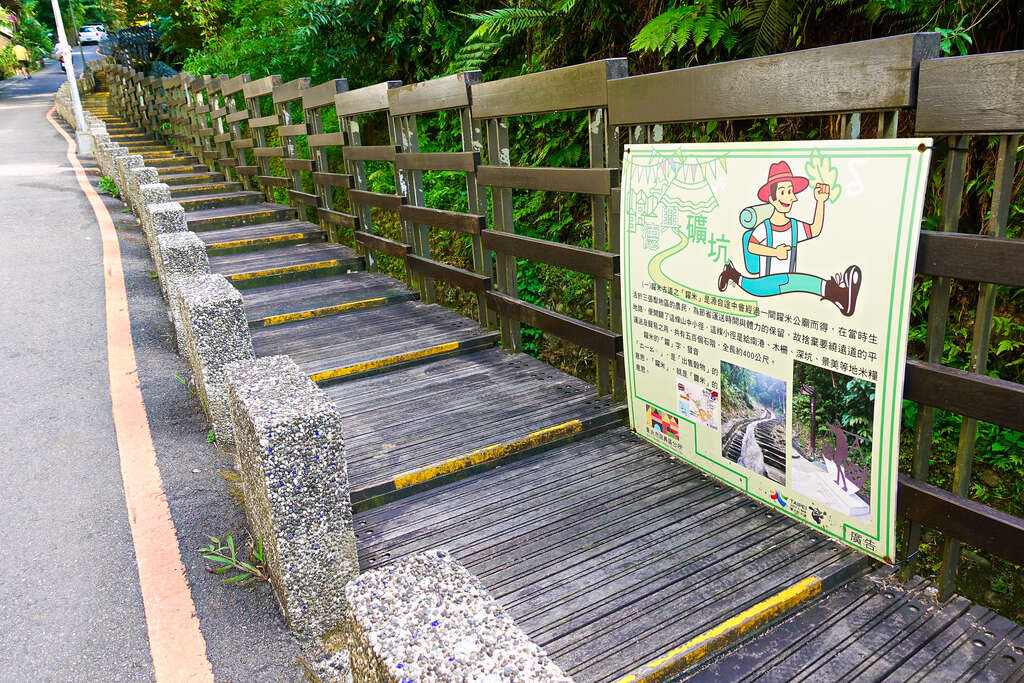Tao Rice Path Introduction
The character "糶" (pronounced "tià") in "Chiao Mi Ancient Trail" means "to sell grain." "Chiao Mi" translates to "selling rice." During the Daoguang period of the Qing Dynasty, farmers in the Sanzhangli area decided to create this mountain path to save transportation time and conserve their energy instead of using the far flat roads. The pathway features a total of 500 stone steps, allowing for the rapid transportation of rice grains from Nangang, Muzha, Shenkeng, Jingmei, and other areas, thus promoting trade. The trail is named "Chiao Mi Ancient Trail" because there is a temple dedicated to the God of Land along the path. It is also referred to as the "Tiao Mi Ancient Trail." Due to the steepness of the stairs, it is said that those carrying rice often rested along the way, leaving a bowl of rice to thank the God of Land for a smooth journey. Over time, residents built a simple stone shrine to show respect to the God of Land, which has undergone several renovations to become the current "Chiao Mi Temple." Nearby, there is the "Dexing Coal Mine Entrance," which began operations around 1897 and reached its peak between 1946 and 1948, but eventually the coal veins were exhausted and the Matsuyama coal became extinct. Today, the mine entrance remains for visitors to explore. In 2011, the ancient stone steps of Chiao Mi Trail were repaved, and arch bridges, wooden walkways, and explanatory signs along the trail were installed, resulting in the appearance that we see today.
















